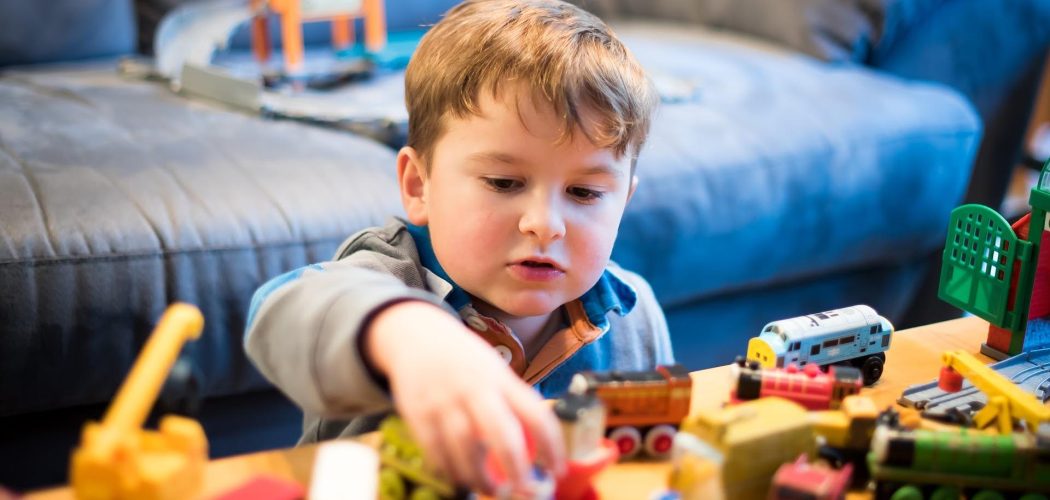This week’s post is written by special guest, Amanda Henderson, from safechildren.info. Amanda is passionate about parenting and kids’ health, and she understands the importance of clean air for our kiddos, both indoors and out. Enjoy this week’s safety topic as you ponder the clean air that you’re breathing!
Is the Air in Your Home Putting Your Child at Risk?
It can be scary to think that the air in your home – the same air you, your children, and your pets breathe – can be contaminated with pollutants. You keep a clean home, but what is causing the problem? Dust is a big issue, and considering the fact that millions of people are allergic to dust mites, an excess can make your children’s allergies run rampant. In order to combat dust and allergens, you likely turn to cleaning products, but the chemicals in these products saturate the air in high concentrations, and even the smallest amount can cause respiratory irritation. Other culprits are carbon monoxide, air fresheners, and even paint fumes. If your child has breathing difficulties such as asthma or allergies, or has a respiratory infection such as croup, bronchiolitis, or a chest cold, breathing in contaminated air can make the condition worse.
Clean with Care
All this talk of allergens and air pollution has you in full-on cleaning mode, but you need to be sure your cleaning routine won’t aggravate allergy-sufferers and/or spread the air contaminants around, as opposed to reducing them. If you can’t designate an entire day to cleaning, spread the tasks out throughout the week, and recruit the kids to help with easy, safe chores such as sweeping or laundry. Your routine should include vacuuming, dusting, and washing the bedding, as these are a prime spot for dust, pollen, and pet dander to collect. Remember those cleaning products that put chemicals into the air? Look for cleaning solutions that are eco-friendly and hypoallergenic. In addition, make sure you aren’t bringing allergens inside. If you have a doormat, make sure it is made of synthetic materials and makes a trip through the washer regularly. Children love to play outside, but make it a rule that clothes must be changed when they come in. Encourage your child to leave their shoes at the door in a bin or cubby to prevent pollen and dirt from being tracked around the house.
Purify the Air
You know how to clean your home, but how can you clean something you can’t physically see? Is it really that dirty? Well, according to APEC Water, “The Environmental Protection Agency (EPA) has posited that indoor air is one of the top 5 public health threats to Americans,” and this statistic becomes scarier when you consider how much time you and your child spend indoors. In fact, indoor air quality poses a much greater threat than outdoor air, and purifying offers plenty of benefits other than just peace of mind. For example, cleaner air will reduce the likelihood of lung and physical development diseases that young children are susceptible to, give your child more energy at home to play and learn, and potentially decrease symptoms from respiratory issues such as asthma and allergies. In order to improve the air quality in your home, you’ll need to purify the air, and doing so is easy. Be sure you replace the air filters in your HVAC unit at the beginning of each new season, and consider purchasing an air purifier with a HEPA filter to get rid of microscopic yet aggravating allergens such as pollen, pet dander, dust mites, and ragweed. If your budget allows, you might also consider buying a vacuum with a HEPA filter, especially if you have carpet that children are often playing and rolling around on.
Your child’s health is your priority, so don’t let the air inside your home prevent that. Stay on top of your cleaning routine, use eco-friendly cleaning products, try to keep children from tracking in allergens, and take steps to purify the air. Clean air is achievable with a little bit of work.
You can find more amazing work about healthy parenting and families from Amanda here!




6 Responses
Ready for a new look? See pictures of the hottest hairstyles, haircuts and colors of 2019. http://www.hairstylesvip.com Best Hairstyles for Women 10000+ Trending Ideas
If some one wants expert view on the topic of blogging after that i suggest him/her to visit this blog, Keep up the nice job.
Thanks so much for the blog post.
Thanks so much for the blog post.
Asking questions are actually good thing if you are not understanding something completely, except this piece
of writing gives fastidious understanding even.
Hi there! I could have sworn I’ve visited your blog before but after going through some
of the articles I realized it’s new to me. Regardless, I’m certainly
delighted I found it and I’ll be bookmarking it and checking back often!